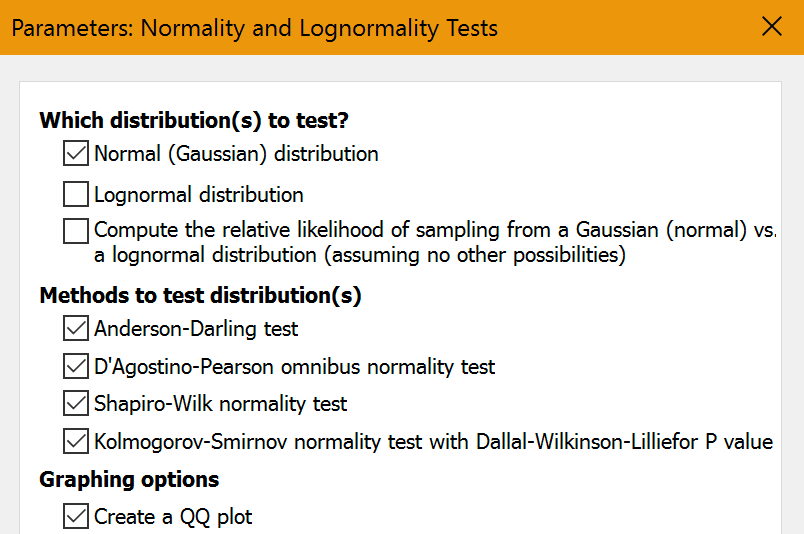Test column data for normality and lognormality
•We've added one more normality test (Anderson-Darling). So now Prism can test for normality with four tests.
•The normality test of column data is now a separate analysis, rather than being an addon to column statistics.
•In addition to (or instead of) testing for normality, test for lognormality, and test whether your data were more likely to have been sampled from a Normal (Gaussian) or lognormal distribution.
•Plot a QQ plot as part of normality testing.

New transforms
•Round data to a specified number of digits after the decimal point.
•Logarithm base 2, and its inverse (2^Y)
•Inverse statistical functions to compute a P value from a statistical ratio (and degrees of freedom) : zinv, tinv, chiinv, Finv (to be used when writing a user-defined equation or transform).
t tests
•The multiple t test analysis now automatically makes a volcano plot (difference vs. P value).
•The t test can now plot the confidence interval for the difference between means.
•The one-sample t test can be used with data entered on a grouped table as mean, n and SD or SEM.
Other improvements
•Grubbs test reports the value of G when an outlier is found.
•With grouped, nested, or XY tables, individually test each subcolumn for outliers.
•The row statistics can compute mean and confidence interval.
•When creating a ROC curve, choose the confidence level you want (i.e. 99% instead of 95%) and the method used to compute it.
•The binomial test is much faster.
•Calculating asymmetrical confidence intervals for nonlinear regression is two-three times faster.
•Descriptive statistics include harmonic mean and quadratic mean with their confidence intervals.
•The correlation matrix analysis can create a heat map of R2 values (new in 8.1).